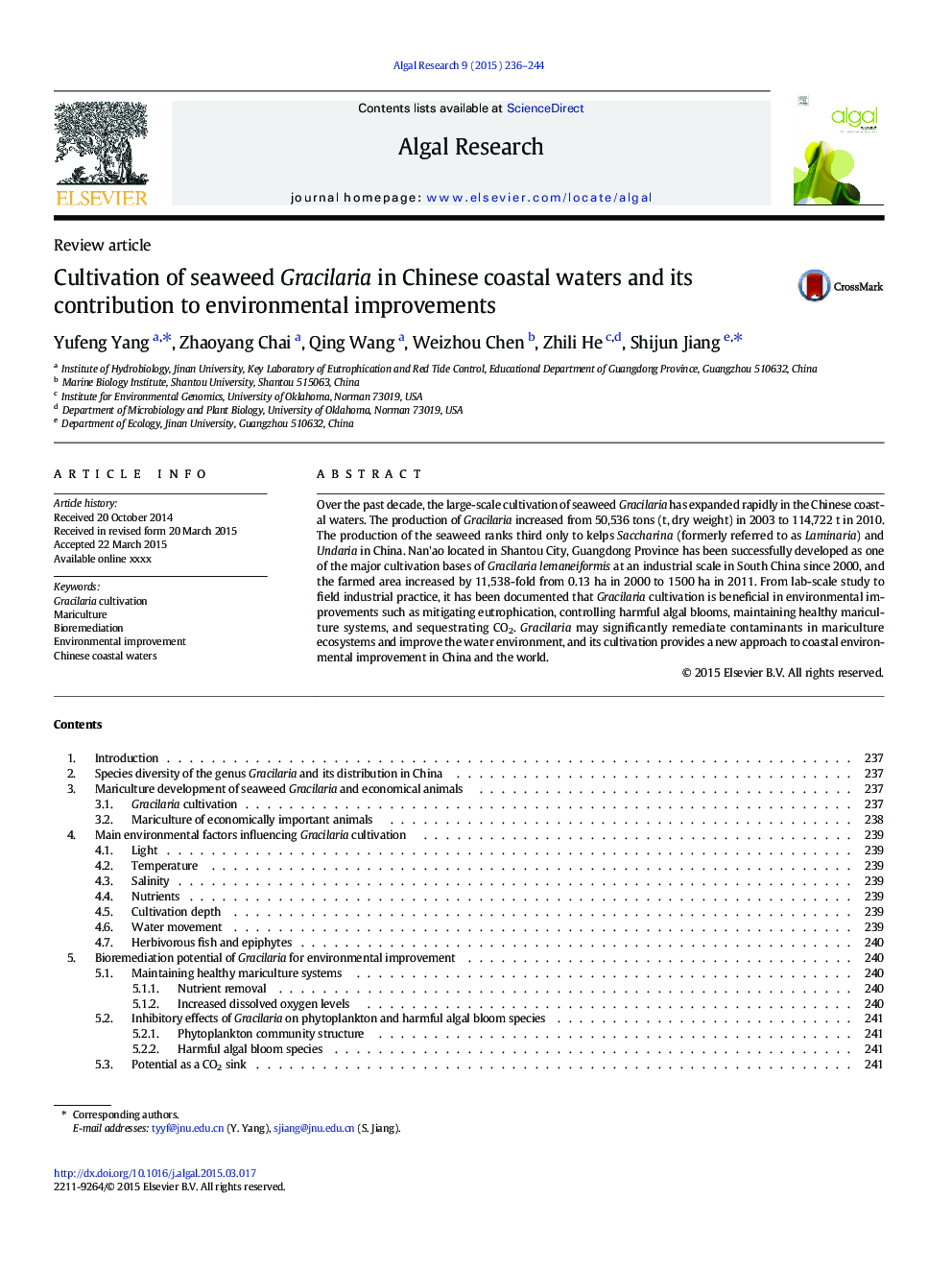| Article ID | Journal | Published Year | Pages | File Type |
|---|---|---|---|---|
| 8088187 | Algal Research | 2015 | 9 Pages |
Abstract
Over the past decade, the large-scale cultivation of seaweed Gracilaria has expanded rapidly in the Chinese coastal waters. The production of Gracilaria increased from 50,536Â tons (t, dry weight) in 2003 to 114,722Â t in 2010. The production of the seaweed ranks third only to kelps Saccharina (formerly referred to as Laminaria) and Undaria in China. Nan'ao located in Shantou City, Guangdong Province has been successfully developed as one of the major cultivation bases of Gracilaria lemaneiformis at an industrial scale in South China since 2000, and the farmed area increased by 11,538-fold from 0.13Â ha in 2000 to 1500Â ha in 2011. From lab-scale study to field industrial practice, it has been documented that Gracilaria cultivation is beneficial in environmental improvements such as mitigating eutrophication, controlling harmful algal blooms, maintaining healthy mariculture systems, and sequestrating CO2. Gracilaria may significantly remediate contaminants in mariculture ecosystems and improve the water environment, and its cultivation provides a new approach to coastal environmental improvement in China and the world.
Related Topics
Physical Sciences and Engineering
Energy
Renewable Energy, Sustainability and the Environment
Authors
Yufeng Yang, Zhaoyang Chai, Qing Wang, Weizhou Chen, Zhili He, Shijun Jiang,
